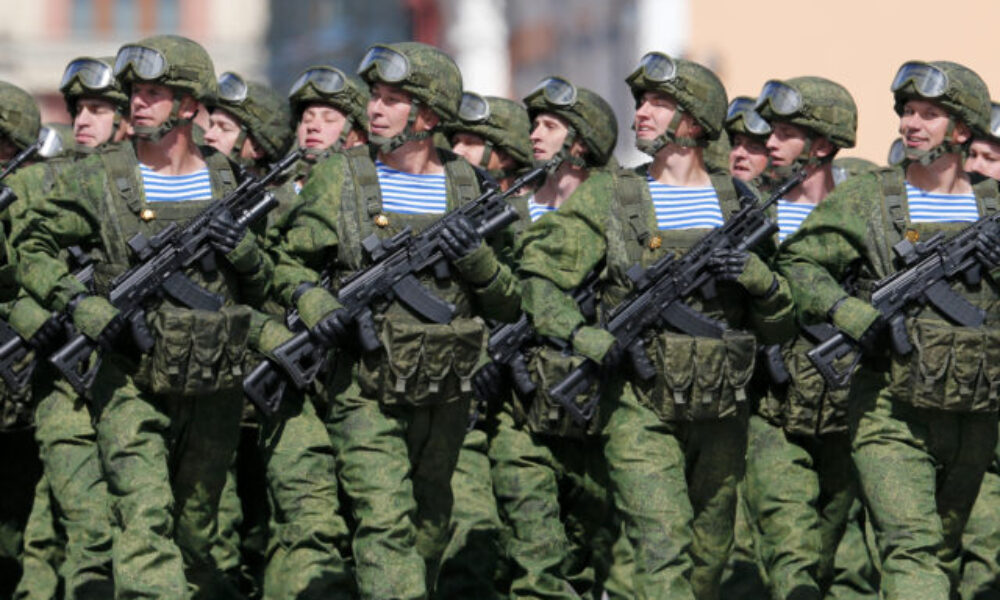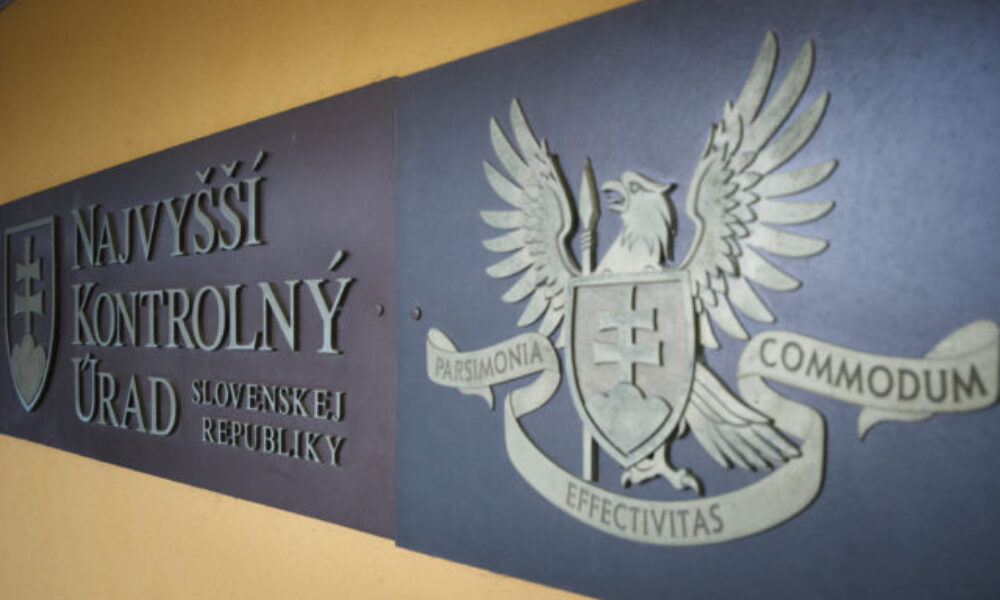
This is an English version of my piece originally published in German by the journal Ukraine-Analysen. You can read the German version here – Drohnenkrieg in der Ukraine: Das Zusammenspiel von High- und Low-Tech.
Since the start of the Russo-Ukrainian war, the role of unmanned systems in land, air, and naval operations has grown significantly. While drones have not yet produced a decisive military breakthrough—such as the achievement of a war aim or outright victory by either side—they have been essential to Ukraine’s primary objective of national survival. At the same time, they have become a force multiplier on the battlefield, substituting for such traditional capabilities as artillery and reducing the direct exposure of soldiers to frontline combat.
The use of unmanned systems made the frontline deadlier. It has expanded the kill zone along the frontline to 20 km, with both sides now specifically targeting drone teams of the enemy.
Despite expectations that drone warfare would quickly progress toward more advanced solutions, increasingly integrating technologies such as artificial intelligence (AI), developments in both Russia and Ukraine demonstrate that this transition has been slower than anticipated. While several innovations have emerged in both countries, as of summer 2025, neither has achieved mass production of such advanced systems.
By contrast, the most significant battlefield impact to date has come from a comparatively low-tech but highly effective solution: First Person View (FPV) drones controlled through physical fiber-optic cables. FPV drones are highly agile and maneuverable quadcopters equipped with a camera that are piloted using specialized immersive goggles. Usually, they are radio-controlled, but in this case, the signal is transmitted through a physical fiber-optic cable to make it less susceptible to jamming.
The coexistence of high- and low-tech, such as advanced AI-enabled technologies and more basic fiber-optic solutions, in drone warfare during Russia’s war on Ukraine highlights an important trend: under conditions of constantly evolving counter-drone measures, innovation can take unexpected directions, and the creative repurposing of existing technologies can prove as effective on the battlefield as more sophisticated systems.
History of Drone Warfare and Its Role in the Russia-Ukraine War
The use of unmanned systems in warfare dates back to 1584, when explosive ships were employed during the Antwerp blockade. In 1916, Britain’s Ruston Proctor Aerial Target, inspired by Nikola Tesla’s experiments with radio control, marked an early milestone. The United States soon tested aerial torpedoes in the 1930s and later deployed radio-controlled weapons during the Second World War against German rocket sites. During the Cold War, Unmanned Aerial Vehicles (UAVs) such as the RP-71 advanced the possibilities of remote reconnaissance.
In Vietnam, drones like the Ryan 147A Fire Fly were used for surveillance and signals intelligence, followed by Lockheed’s Aquila, which introduced laser target designation. Israel’s 1982 Pioneer UAV revolutionized battlefield surveillance and directly influenced later U.S. adoption in the Gulf War, where systems such as the Hunter with infrared sensors were deployed. The 1994 Predator, the first U.S. medium-altitude UAV with autonomous functions, saw action in Bosnia, Somalia, and Kosovo. By 2001, more than 5,000 drones were in use in Afghanistan. Subsequent systems—including the Raven, MQ-9 Reaper, and Global Hawk—expanded both intelligence, surveillance, and reconnaissance (ISR) and strike capabilities.
Non-state actors also recognized the potential of drone warfare. The Islamic State effectively adopted drones in Syria and Iraq, most notably during the coalition’s siege of Mosul in late 2016 and early 2017. Drones enabled IS militants to track coalition troop movements in and around the city, providing them with a battlefield advantage.
The use of drones gained further prominence in the Second Nagorno-Karabakh War of 2020 when Azerbaijan established air superiority over Armenia by deploying Turkish Bayraktar armed drones.
Drone technologies emerged on the battlefield in Ukraine well before the full-scale invasion of 2022. With the outbreak of armed conflict in the Donbas between Russian-backed forces and the Ukrainian army in 2014, Ukraine invested in building a domestic drone industry.
Today, Ukraine’s drone ecosystem is highly decentralized, comprising at least 500 producers, in addition to numerous small-scale, non-commercial manufacturers capable of assembling low-cost drones under home conditions.
According to official data, Ukraine produced over 2 million drones in 2024 and plans to increase production to 4 million, with the capacity to manufacture up to 10 million systems in 2025. Drone prices range from a few hundred dollars for FPVs to a quarter of a million dollars for long-range or more sophisticated reconnaissance systems.
By the summer of 2025, a notable trend on the battlefield has been the growing use of ground unmanned vehicles by Ukrainian troops for diverse purposes, including remote mining, logistics, and medical evacuation. Ukraine has also advanced the deployment of naval unmanned systems—both surface and underwater platforms, such as the SeaBaby and Magura—to strike Russian infrastructure and military targets in the Black and Azov seas.
Russia, in contrast, has maintained a more centralized system of drone production. Its most prominent UAV used against Ukraine is the Iranian-designed Shahed-136 kamikaze drone, locally designated as the Geran. Russia localized its production in several factories deep in its rear, including at the Alabuga Special Economic Zone in the Republic of Tatarstan. The Russian defence industry is sharply increasing production of Shahed-family drones, targeting output of more than 6,000 units per month—around 200 per day. If sustained, this pace could push production in 2025 beyond 70,000–75,000 drones.
Following Ukraine’s lead, and in response to battlefield challenges, Russia has also accelerated the development of ground and naval drones, though its progress remains slower than that of Ukraine.
Drones: Concept and Classification
Unmanned vehicles, commonly referred to as drones or remotely piloted vehicles (RPVs), are systems operated without a pilot physically on board. For this article, the term “drone” is used broadly to cover aerial, naval, and ground systems.
The war in Ukraine has produced an extraordinary variety of unmanned systems. In May 2025 alone, Ukrainian forces reportedly used 400 different types against Russia.
In Ukraine, drones are grouped by configuration (quadcopter, fixed-wing), payload, and propeller diameter. By purpose, they are commonly divided into reconnaissance (surveillance), strike, armed platforms (launching missiles or bombs), loitering munitions (the drone itself as a weapon), transport (cargo and supply), and multirole systems that combine several of these functions.
Based on the classification of the Ministry of Defence of Ukraine, drones are divided into strike FPV drones, reconnaissance multicopters, reconnaissance fixed-wing drones, unmanned strike bombers, and deep-strike UAVs.
The impact of small drones in Ukraine is considerable. Russian military medical reports suggest that over 75% of injuries sustained by their soldiers during low-intensity combat were caused by FPV strikes. Drones have also proven highly effective against heavy armor: by early June 2025, of the 31 U.S.-supplied tanks lost by Ukraine, 27 were destroyed by drones.
In July 2024, Ukraine established its Unmanned Systems Forces, which is the world’s first dedicated military branch that employs unmanned aerial vehicles, ground-based robotic systems, and marine surface and underwater drones to carry out a variety of tasks. Although drone teams represent roughly 2% of Ukraine’s military, they are responsible for a major share of Russian losses.
Many brigades and battalions have dedicated drone units, but there are also specialised formations focused solely on unmanned systems — for example, the 429th “Achilles” Separate Unmanned Aerial Systems Regiment and the 414th Separate Brigade “Birds of the Madyar.” In March 2025, five of these elite units were selected for the new Drone Line project, which will reinforce Ukrainian ground forces on key sectors of the frontline.
Russian President Vladimir Putin announced the creation of Russia’s own unmanned-systems forces in June 2025, roughly a year after Ukraine established similar units. It’s worth noting the existence of another organization in Russia, the Center for Advanced Unmanned Technologies “Rubikon”. Rubikon functions as a procurement, analytics, and R&D hub. Emphasising isolation of Ukrainian formations by striking logistics and targeting UAV teams, Rubikon’s arrival to separate parts of the frontline reportedly led to some Ukrainian brigades losing 40–70% of their UAV positions within a week.
High-Tech Solutions: Towards Greater Autonomy in Drone Warfare
Both Ukraine and Russia face major challenges in drone operations, including shortages of skilled personnel, the growing volume of battlefield data, and the expansion of electronic warfare. These pressures have pushed both sides to invest heavily in autonomous systems.
For Ukraine, a key goal is to reduce reliance on soldiers in direct combat roles by substituting them with autonomous unmanned platforms. At present, the effectiveness of drones depends largely on pilot skill: most FPV systems achieve a hit rate of 30–50%, but for inexperienced pilots this can be as low as 10%. Forecasts suggest that AI-controlled FPV drones could reach accuracies of around 80%. Integrating AI would allow drones to process data, make decisions, and perform tasks with minimal human input.
In military contexts, autonomy refers to the ability of a system to accomplish objectives with little or no human oversight in complex and unpredictable environments. Full autonomy has not yet been observed on the battlefield in Ukraine. While AI is already aiding decision-making through warfighting systems, its role remains partial: improving certain functions rather than enabling complete autonomy.
Since mid-2023, both Ukraine and Russia have accelerated work on drones equipped with machine vision, which uses image recognition algorithms to store a target’s image and maintain lock even while it is moving. Mastering this technology would allow drones to overcome electronic warfare in the final meters before impact, since the strike command would be issued outside the range of jamming. According to Ukraine’s defense tech cluster Brave1, FPV drones with machine vision are already deployed at the front and procured by the state. However, they face obstacles, such as poor camera quality, difficulties in targeting vulnerable points like tank weak spots, and problems adapting existing drones to new modules.
As of summer 2025, AI development for unmanned systems in Ukraine has advanced in several directions — optical target recognition and acquisition, navigation algorithms, and swarm technologies.
Ukraine’s defense industry is also building standalone AI-driven software modules that can be integrated across different systems—from FPVs and long-range drones to turrets on unmanned ground vehicles. These modules are designed to provide specific autonomous functions while ensuring cross-platform compatibility. Current AI-enabled tools include the acoustic reconnaissance system Zvook; ePPO, a mobile app that collects and analyzes civilian reports of missiles and drones; ZIR software for automatic target detection; and an AI-enabled navigation system developed by The Fourth Law.
Elements of AI are also being applied in long-range strike missions against Russia. While drones such as Liutyi are not fully autonomous, they can already execute parts of their flight routes independently.
One of the most striking demonstrations of AI in drone warfare was Operation Spiderweb, conducted by Ukraine’s Security Service on June 1, 2025. The operation destroyed or damaged at least 20 Russian strategic aircraft —Ukrainian sources claim as many as 41 —using FPV drones with specialized construction. Although the drones were manually piloted from Ukraine, AI elements contributed: the systems were reportedly trained to identify vulnerable points on bombers and to carry out pickering algorithms, automatically directing strikes at weak spots in aviation equipment.
Another advanced concept under development is swarm intelligence, where multiple drones operate collaboratively by sharing data and coordinating tasks through decentralized AI—similar to flocks of birds or ant colonies (Biju et al., 2025). In February 2025, Ukraine’s Minister of Digital Transformation, Mykhailo Fedorov, announced that a dozen companies are working on drone swarm technologies.
As of summer 2025, Ukraine has reportedly employed drone swarming technology in over 100 operations. Developed by the Ukrainian company Swarmer, the technology enables groups of drones to coordinate strikes autonomously, adjusting roles if one drone becomes inoperable or loses power. Military units have operated swarms of three to eight drones, while the software has also been tested with as many as 25. A common configuration involves one reconnaissance UAV working in tandem with two strike UAVs to target a Russian trench.
Separately, Ukrainian companies have begun mass-producing drones fitted with AI-enabled onboard terminal-guidance systems. Terminal guidance allows a drone or missile to home in on its target automatically during the final phase of flight. Once the drone is close, onboard AI-enhanced sensors take over and steer it precisely without operator input—a true “fire-and-forget” strike. Expectations are that most frontline drones will be fitted with similar autonomy systems within six to nine months. This technology has increased strike effectiveness by two- to four-fold.
Ukraine’s government, military, and industry emphasize the “man-in-the-loop” (MITL) concept, ensuring that a human operator remains involved in decisions about target engagement. This principle is meant to prevent AI from independently authorizing lethal strikes.
Russia, meanwhile, is also experimenting with AI integration. AI is reported to play a role in Russian drones such as the Lancet, Tyuvik, and V2U, enabling them to navigate independently under electronic suppression and locate and strike targets without pilot control.
In December 2024, reports indicated that Shahed-136 strike drones had been upgraded with AI. Experts cautioned, however, that this was not a true breakthrough, as the enhancements appeared to rely on computer vision algorithms rather than advanced AI. Still, these upgrades improved navigational accuracy and resilience against jamming, representing a notable increase in threat.
Shahed (Geran) drone strikes, once largely ineffective with hit rates below 10 percent, are now achieving nearly 20 percent penetration. This increase is not due to weakened Ukrainian defenses or increased use of AI technologies, but rather to Russia’s evolving tactics. By employing new methods, such as overlapping flight paths and staggered launch waves, Russian troops force Ukraine’s defenders to stretch thin and exhaust their interceptors more rapidly.
Overall, throughout 2025, the number of aerial weapons used in Russian strikes against Ukraine increased from an average of about 90 per day in January to 140 per day in August. The ratio of drones to missiles in Russian attacks has remained largely consistent, with drones making up 95–97% of the total. This trend is likely to continue.
Low-Tech Solutions: Fiber-Optic Drones and Their Countermeasures
As progress with advanced technologies is slow and electronic warfare (EW) has expanded on the battlefield, Russian developers have turned to designing and producing fiber-optic drones in parallel. While not a new concept—wire-guided munitions have existed for decades—their resilience against EW, ability to deliver precise strikes on armored targets, and relatively simple design made them easy to scale.
The Soviet Union experimented with such systems as early as the 1970s, notably with the Fagot anti-tank missile guided by long control wires. Cable-operated technologies later became common in civilian drones used for inspecting tunnels, pipelines, and mines, where connectivity is limited.
With the onset of Russia’s full-scale invasion in 2022, both Russian and Ukrainian engineers tested fiber-optic drone prototypes. Russia, however, moved faster, partnering with Chinese manufacturers and rapidly scaling production. By late summer and early autumn 2024, these drones had become a significant tactical challenge for Ukrainian forces—particularly in Russia’s Kursk region.
Ukraine’s early experiments with fiber-optic drones in 2022 struggled to gain traction. According to Ukrainian radio-technology specialist Serhiy “Flash” Beskrestnov, one team successfully flew fiber-optic drones for the military, but the idea attracted little interest. A later project submitted to a Ministry of Defence hackathon was also shelved. Meanwhile, videos from mid-2024 onward began showing Russian fiber-optic drones in action, both in the Kursk region of Russia and in the Donetsk region of Ukraine.
In 2025, fiber-optic drones became one of Ukraine’s biggest challenges on the battlefield. Ukraine’s Minister of Digital Transformation described these vehicles as one of the game changers in modern technological warfare. The technology offers high-resolution imaging, resists electronic warfare, and provides stable connections with operators, enabling greater precision in target acquisition. These drones are most often used in ambush scenarios: they can remain in standby mode along a preset route, wait for a target, and even land in a field without losing contact.
As of summer 2025, fiber-optic drones are being deployed on a large scale by both Russia and Ukraine. According to researchers’ estimates, by the end of 2024, Ukraine’s and Russia’s production of fiber-optic FPV drones accounted for around 10% of total FPV output. Based on this data, Ukraine is currently producing at least 20,000 such drones per month, while Russia produces around 50,000.
The operational range of these systems depends on the length of the fiber-optic cable: early models were limited to about 10 km, whereas current versions can reach up to 40 km. Russia has localized fiber-optic cable production, with the main facility located at the Saransk plant. The factory operates six production lines that together produce 12,000 km of fiber-optic cable per day—around 4 million km annually.
Countermeasures against fiber-optic drones are necessarily physical, since jamming is ineffective. Cutting the cable disables the system. The most common defenses include small arms and machine guns. In many cases, Ukrainian FPV drones are used to sever fiber-optic cables with their propellers, instantly neutralizing the threat. Another method, increasingly common along the front line, is the installation of fishing nets designed to catch and disable incoming drones.
Despite their effectiveness, many drone developers and military professionals see fiber-optic drones as a “dead-end branch” of technological evolution, with limited development prospects. The shift toward low-tech fiber-optic drones is not only a response to electronic warfare on the battlefield but also risks diverting Ukraine’s already limited financial and human resources away from the development of more advanced and efficient technologies.
The rapid evolution of drone warfare in Ukraine has produced hundreds of unique unmanned systems, each designed to address specific battlefield challenges. Ukraine’s decentralized production model, shaped by direct feedback from frontline operators, has enabled the emergence of diverse aerial, naval, and land systems. Russia, by contrast, has relied on massive financial investment and support from its allies, China and Iran, to scale the most effective unmanned systems for mass deployment against both Ukrainian forces and civilian targets. The Russian drone attacks against Ukraine in 2025 increased, and this trend is likely to continue.
Despite their growing role, drones alone have not delivered decisive results for either side. Conventional systems, therefore, remain central in shaping the outcome of this conflict. The mass integration of artificial intelligence into drone warfare could mark a turning point in the near future—enhancing data processing, target recognition, and autonomous decision-making, with humans involved only at the final stage of engagement.
As of summer 2025, attempts to integrate AI for automatic targeting, navigation, and ISR functions are expanding, yet fully autonomous systems remain beyond reach for both Ukraine and Russia. While both sides have turned to scaling low-tech alternatives such as fiber-optic drones, their limited potential suggests they are unlikely to remain relevant in increasingly technology-driven conflicts.
Rapid advancements in AI are likely to continue in the coming years, with successful developments enhancing the capabilities of individual combatants and helping countries address manpower shortages and reduce the impact of human limitations in warfare. In this context, both sides of the war will need to prioritize the development of novel counter-drone measures and the tactics for employing them.










